In the ever-evolving world of compact SUVs, two names stand out for their blend of performance, comfort, and innovative features: the Volvo XC40 and the Volkswagen Tiguan. Both models, revamping their offerings for the 2024 model year, have drawn attention for their unique attributes that cater to a variety of consumers. In this comparison, we will delve into the technical specifications, performance metrics, and innovations that define these two formidable contenders.
Volvo XC40 vs VW Tiguan – Performance, range & efficiency compared
Two cars, one duel: Volvo XC40 meets VW Tiguan.
Which one wins in performance, efficiency and value for money? Find out now!
Powertrain Options and Performance
The Volvo XC40 showcases a robust engine lineup, featuring 2.0-liter petrol mild-hybrid options that deliver power outputs of 163 HP and 197 HP. With a front-wheel-drive configuration and an efficient automatic dual-clutch transmission, this compact SUV offers an acceleration time of 8.6 seconds for the base model, while the higher-powered variant can dash to 100 km/h in just 7.6 seconds. Impressively, it has a maximum speed of 180 km/h and a torque range of 265 to 300 Nm.
On the other hand, the VW Tiguan provides a more diverse range of powertrains, including petrol, diesel, and hybrid configurations. The power output varies from 130 HP to an eye-popping 272 HP for the top-end models, with all-wheel-drive options available for those seeking enhanced traction and performance. The Tiguan's acceleration times are equally impressive, with some variants achieving 0-100 km/h in as little as 5.9 seconds, topped by a maximum speed of 242 km/h. Torque output ranges from 220 Nm up to 400 Nm, depending on the engine choice.
Fuel Efficiency and Emissions
When it comes to fuel consumption, the XC40 performs decently with a fuel efficiency of 6.5 L/100 km, placing it in a competitive position within the compact SUV segment. Its carbon dioxide emissions hover around 147 g/km, emphasizing Volvo's commitment to a more sustainable driving experience.
The Tiguan boasts a slight edge in fuel efficiency, recording figures as low as 5.3 L/100 km in its diesel variants, while its hybrid models can achieve an astounding 0.4 L per 100 km, aligned with increasingly stringent emission regulations. The Tiguan’s CO2 emissions vary across models, resting between 139 g/km and 193 g/km, demonstrating versatility for eco-conscious drivers.
Interior Comfort and Technology
The interior of both vehicles reflects a commitment to comfort and style. The Volvo XC40 offers a spacious cabin with a minimalist Scandinavian design ethos, accommodating up to five passengers. Cargo space is generous at 452 liters, providing ample room for luggage or outdoor gear. Notably, the XC40 is equipped with innovative technology features including a touchscreen infotainment system integrated with advanced driver assistance systems, enhancing the overall driving experience.
Conversely, the VW Tiguan shines with a slightly larger body, providing a larger trunk capacity of up to 652 liters, depending on the model. The Tiguan’s interior is characterized by a modern aesthetic filled with high-quality materials, intuitive controls, and a well-designed infotainment system that caters to tech-savvy users. The addition of an extensive suite of driver-assistance functionality ensures that both driver and passengers enjoy a safe and comfortable ride.
Conclusion: Which SUV Comes Out on Top?
Ultimately, the choice between the Volvo XC40 and VW Tiguan may boil down to personal preferences and driving habits. The XC40 offers a compelling combination of performance and luxury rooted in Swedish design, while the Tiguan provides a broader selection of engines and configurations to cater to a diverse clientele.
With its efficient engines, remarkable acceleration, and spacious interior, the Tiguan appeals to those who prioritize performance and versatility. Meanwhile, the XC40, with its eco-friendly focus and cutting-edge technology, attracts drivers who value sustainability without sacrificing style or comfort. Both vehicles are remarkable in their own right, positioned well to satisfy the needs of the modern SUV buyer.
Here’s where it gets real: The technical differences in detail
Costs and Efficiency:
When it comes to price and running costs, the biggest differences usually appear. This is often where you see which car fits your budget better in the long run.
VW Tiguan has a somewhat advantage in terms of price – it starts at 32800 £, while the Volvo XC40 costs 36800 £. That’s a price difference of around 3977 £.
Fuel consumption also shows a difference: VW Tiguan manages with 0.40 L and is therefore convincingly more efficient than the Volvo XC40 with 6.50 L. The difference is about 6.10 L per 100 km.
Engine and Performance:
Power, torque and acceleration say a lot about how a car feels on the road. This is where you see which model delivers more driving dynamics.
When it comes to engine power, the VW Tiguan has a distinct edge – offering 272 HP compared to 197 HP. That’s roughly 75 HP more horsepower.
In acceleration from 0 to 100 km/h, the VW Tiguan is clearly perceptible quicker – completing the sprint in 5.90 s, while the Volvo XC40 takes 7.60 s. That’s about 1.70 s faster.
In terms of top speed, the VW Tiguan performs clearly perceptible better – reaching 242 km/h, while the Volvo XC40 tops out at 180 km/h. The difference is around 62 km/h.
There’s also a difference in torque: VW Tiguan pulls evident stronger with 400 Nm compared to 300 Nm. That’s about 100 Nm difference.
Space and Everyday Use:
Beyond pure performance, interior space and usability matter most in daily life. This is where you see which car is more practical and versatile.
Both vehicles offer seating for 5 people.
In curb weight, VW Tiguan is slight lighter – 1599 kg compared to 1688 kg. The difference is around 89 kg.
In terms of boot space, the VW Tiguan offers clearly perceptible more room – 652 L compared to 452 L. That’s a difference of about 200 L.
In maximum load capacity, the VW Tiguan performs slightly better – up to 1650 L, which is about 322 L more than the Volvo XC40.
When it comes to payload, VW Tiguan barely noticeable takes the win – 533 kg compared to 532 kg. That’s a difference of about 1 kg.
Who comes out on top?
Overall, the VW Tiguan shows itself to be is largely superior and secures the title of DriveDuel Champion.
It convinces with the more balanced overall package and proves to be the more versatile choice for everyday use.
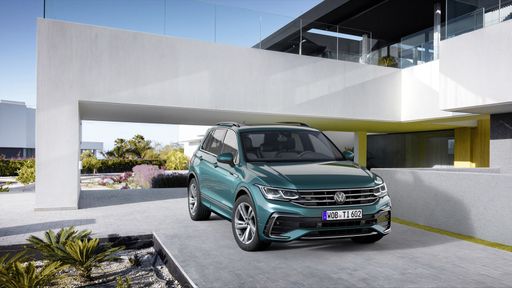 @ Volkswagen AG / VW Media
@ Volkswagen AG / VW Media
VW Tiguan
Volvo XC40
The Volvo XC40 wraps Scandinavian minimalism into a compact, city-ready SUV with a premium cabin that feels both practical and grown-up. It will suit buyers who prize safety, clever storage and a composed ride, proving that small dimensions don't mean small personality.
details @ Volvo Cars
@ Volvo Cars
 @ Volvo Cars
@ Volvo Cars
 @ Volvo Cars
@ Volvo Cars
 @ Volvo Cars
@ Volvo Cars
 @ Volvo Cars
@ Volvo Cars
VW Tiguan
The VW Tiguan blends sensible family practicality with a dash of German polish, delivering a calm, reassuring ride and a cabin that never feels like an afterthought. For buyers who want an SUV that’s easy to live with yet still nicely dressed, the Tiguan is the grown‑up choice that keeps a cheeky wink in reserve.
details @ Volkswagen AG / VW Media
@ Volkswagen AG / VW Media
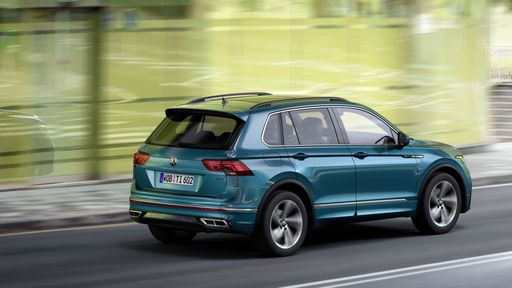 @ Volkswagen AG / VW Media
@ Volkswagen AG / VW Media
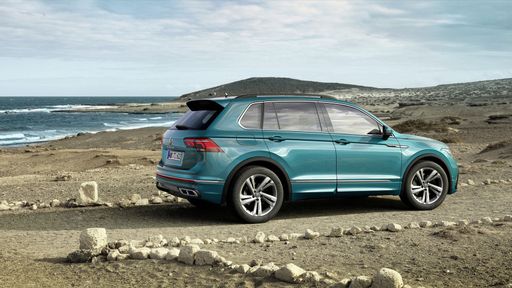 @ Volkswagen AG / VW Media
@ Volkswagen AG / VW Media
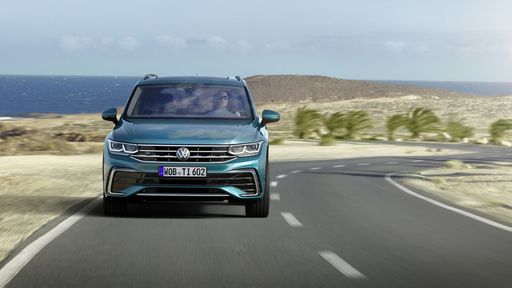 @ Volkswagen AG / VW Media
@ Volkswagen AG / VW Media
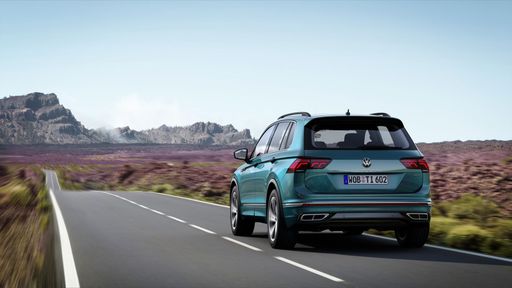 @ Volkswagen AG / VW Media
@ Volkswagen AG / VW Media
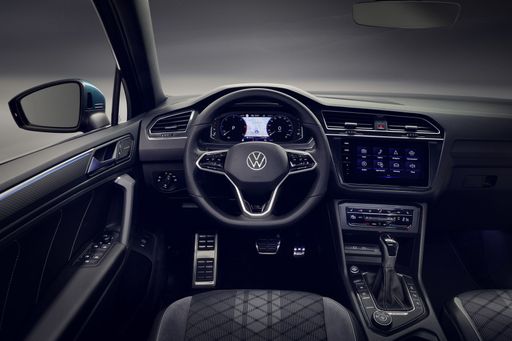 @ Volkswagen AG / VW Media
@ Volkswagen AG / VW Media
 @ Volvo Cars
@ Volvo Cars
|
 @ Volkswagen AG / VW Media
@ Volkswagen AG / VW Media
|
|
|
|
Costs and Consumption |
|
|---|---|
|
Price
36800 - 47200 £
|
Price
32800 - 51900 £
|
|
Consumption L/100km
6.50 L
|
Consumption L/100km
0.4 - 8.4 L
|
|
Consumption kWh/100km
-
|
Consumption kWh/100km
-
|
|
Electric Range
-
|
Electric Range
119 - 129 km
|
|
Battery Capacity
-
|
Battery Capacity
19.70 kWh
|
|
co2
147 - 148 g/km
|
co2
8 - 190 g/km
|
|
Fuel tank capacity
54 L
|
Fuel tank capacity
45 - 58 L
|
Dimensions and Body |
|
|---|---|
|
Body Type
SUV
|
Body Type
SUV
|
|
Seats
5
|
Seats
5
|
|
Doors
5
|
Doors
5
|
|
Curb weight
1688 kg
|
Curb weight
1599 - 1890 kg
|
|
Trunk capacity
452 L
|
Trunk capacity
490 - 652 L
|
|
Length
4425 mm
|
Length
4539 mm
|
|
Width
1863 mm
|
Width
1842 - 1859 mm
|
|
Height
1652 mm
|
Height
1656 - 1658 mm
|
|
Max trunk capacity
1328 L
|
Max trunk capacity
1486 - 1650 L
|
|
Payload
532 kg
|
Payload
460 - 533 kg
|
Engine and Performance |
|
|---|---|
|
Engine Type
Petrol MHEV
|
Engine Type
Plugin Hybrid, Petrol, Petrol MHEV, Diesel
|
|
Transmission
Automatic
|
Transmission
Automatic
|
|
Transmission Detail
Dual-Clutch Automatic
|
Transmission Detail
Dual-Clutch Automatic
|
|
Drive Type
Front-Wheel Drive
|
Drive Type
Front-Wheel Drive, All-Wheel Drive
|
|
Power HP
163 - 197 HP
|
Power HP
130 - 272 HP
|
|
Acceleration 0-100km/h
7.6 - 8.6 s
|
Acceleration 0-100km/h
5.9 - 10.6 s
|
|
Max Speed
180 km/h
|
Max Speed
198 - 242 km/h
|
|
Torque
265 - 300 Nm
|
Torque
220 - 400 Nm
|
|
Number of Cylinders
4
|
Number of Cylinders
4
|
|
Power kW
120 - 145 kW
|
Power kW
96 - 200 kW
|
|
Engine capacity
1969 cm3
|
Engine capacity
1498 - 1984 cm3
|
General |
|
|---|---|
|
Model Year
2024
|
Model Year
2024 - 2025
|
|
CO2 Efficiency Class
E
|
CO2 Efficiency Class
B, G, D, E, F
|
|
Brand
Volvo
|
Brand
VW
|
What drive types are available for the Volvo XC40?
The Volvo XC40 is available as Front-Wheel Drive.
The prices and data displayed are estimates based on German list prices and may vary by country. This information is not legally binding.
